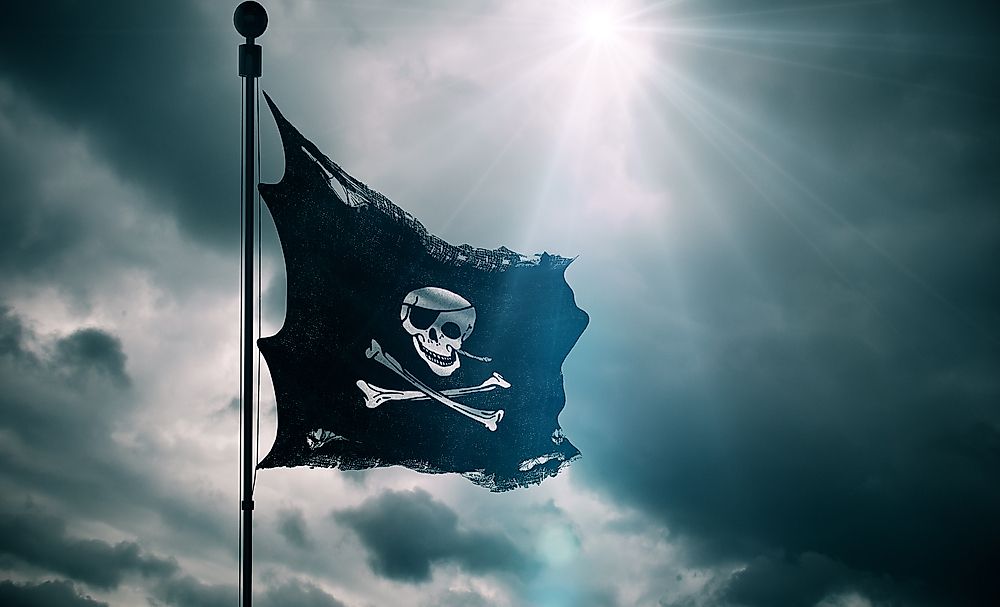Modern Day Pirate Attacks By Country

Until recently, piracy has been relatively unheard of in contemporary news media. The practice, however, has garnered international prominence in recent years (especially the Somali piracy activities off of the coast of Africa). In response, an international coalition has been formed to fend off pirates along the Somali coast. The coalition has enjoyed high levels of success, and piracy there has been significantly assuaged. Nevertheless, the practice has since spread to other major sea routes around the world, from South East Asia and the Mediterranean, to West Africa and Central America. Such piracy poses real threats to maritime travel, and policing massive swaths of open ocean has proven quite difficult. Policing the high seas requires a considerable input of resources, both monetarily and in terms of equipment. In addition, such maritime security efforts cannot realize full success unless there is cooperation at the international level.
Modern pirates tend to attack cargo ships and fishing vessels, which have commodities readily sellable on the black market, and therefore rarely direct their attention towards cruise ships. Smaller pirate gangs, who do not have the resources to seize the cargo being transported, will instead often times board a ship to steal substantial amounts of the cash ships carry for payroll and port fees, and a recent trend has been more frequent kidnappings of crewmembers to be exchanged for ransom money.
Key Areas of Maritime Piracy
Indonesia
The general indication has been that piracy tends to thrive in what are known as ‘choke points’. For instance, in the water surrounding Indonesia, there has been an increase in pirate activity, giving it the reputation of the world's most pirate infested water. The Strait of Malacca is the epicenter for much of the pirate activity in Indonesia. The high volume of valuable goods crossing through the strait makes it a position that is vulnerable to violent attacks.
Somalia
Piracy has been a problem in Somalia since at least the year 2000. Instability within the country rendered the existence of a national coast guard impossible, and large ships took advantage of the situation by entering Somali waters. In response to the invasion, the local fishing population formed a defensive group as a result. These groups hijacked the foreign ships who were entering illegally. As their hijackings became more and more profitable, it became a larger operation. This is how pirate activity in Somalia began.
Nigeria
Much like Somalia, piracy started to become a large problem in Nigeria in the early 2000s. The pirate activity surrounding the Nigerian coast is sophisticated and highly evolved, at a cost of around 2 billion USD annually. Unlike pirate activities in the Indian Ocean or Somali coast, piracy in the Gulf of Guinea near Nigeria not only seem to increasing, but seem to be getting more and more violent.
Combating Modern Pirates
International anti-piracy efforts have been effective in bringing the number of total piracy incidents down from a peak of nearly five hundred attacks in 2010 to around half of that by 2014. Hopefully, this trend will prove to be sustainable over the long-term. Piracy must be treated like any other crime and, like the efforts to decrease crime in general, ending piracy on the high seas will involve improving the socioeconomic situations of people globally, especially in coastal nations that are hotbeds for piracy. These efforts need to be particularly intensified in South East Asia, which has recorded almost three quarters of all pirate attacks. For countries on the west coast of Africa, establishing stable governments will likely be just as critical to combatting piracy as heavy policing of the coasts there.
Ships today are increasingly employing defensive mechanisms against piracy, such as razor wire, electric fences, high-pressure water hoses, and even such hi-tech creations as ‘sound guns’. This new technology is from BAE Systems, and is a non-lethal laser cannon that can be used against moving targets more than a mile away which will daze potential pirates.
Piracy poses an especially unique and serious threat to the global economy, as most international trade takes place via sea transport. As a result, there is a need for a solid international strategy to deal with this scourge. To do so, international cooperation needs to go beyond simply arresting and prosecuting pirates, and look into the underlying causes of poverty that may turn many individuals to a life of maritime crime. These include poor governance, corruption, and lack of education that perpetuates cyclical poverty. Unless these problems are solved, piracy is unlikely to be abated upon the high seas.
Modern Day Pirate Attacks By Country
| Rank | Region | Number of Pirate Attacks |
|---|---|---|
| 1 | Indonesia | 43 |
| 2 | Somalia | 31 |
| 3 | Nigeria | 22 |
| 4 | Gulf of Aden | 10 |
| 5 | India | 7 |
| 6 | Bangladesh | 7 |
| 7 | Red Sea | 7 |
| 8 | Ivory Coast | 6 |
| 9 | Peru | 4 |
| 10 | Singapore Strait | 4 |











